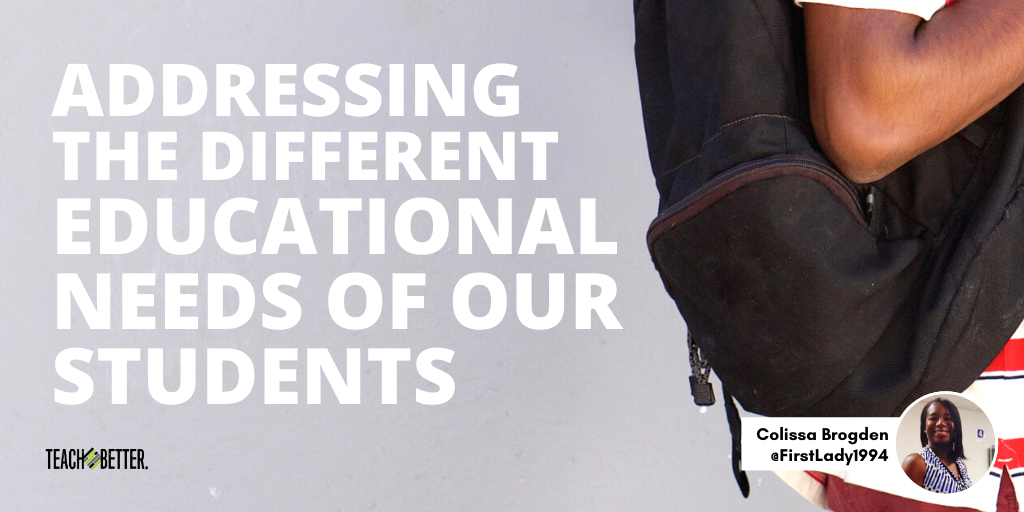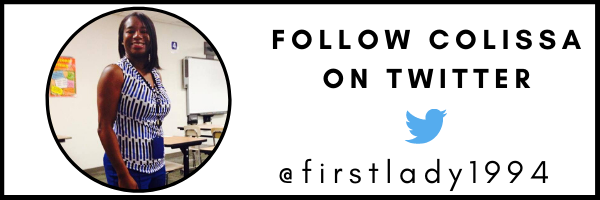TL;DR:
- Educators must address the different educational needs of our students by setting high expectations, building relationships, desiring and implementing change, understanding our own biases, and choosing to connect.
- Teachers, administrators, and parents should establish and maintain supportive roles in this process of learning.
- Share your expectations with students by using I can statements.
At the beginning of this school year, teachers faced many concerns. Among so many other things, issues of health, safety, and societal issues were at the forefront. I was concerned with the diverse educational needs of my students who come from the different school districts that comprise my campus. Certainly, I was concerned with how I could meet those educational needs as soon as students entered my classroom.
We need to keep in mind the educational needs of our students.
Within the first few weeks of the pandemic, it became obvious that many of my students required constant support and supervision. They needed to access and complete assignments. Some felt underwhelmed with the amount of online communication. However, others felt overwhelmed with too much communication via Zoom, Remind, Microsoft Team, email, and texts. In addition, teachers, counselors, and parents required students to use their higher level thinking skills in absentia of an instructor.
Every student who comes into a classroom is a unique individual with a different need and way of learning. Those of us charged with educating children have to aspire to create a climate that encourages all children to excel. Click To TweetI concluded some lessons are better suited for remote learning (structured time away from the classroom), including students needing to read and follow directions, collaborative and peer-to-peer learning, research and problem solving skills, and critical thinking skills. On the other hand, others are better suited for online learning (teacher-led but student-centered), independent of the classroom setting.
As it stands now, with groups of students alternating days, it is imperative that school decision makers keep in mind the different educational needs of students.
Thus, it is necessary for successful implementation of remote and online learning. It is important for teachers, administrators, and parents to establish and maintain supportive roles, and not just supervisory roles in this process of learning.
Early on, I realized several things are significant in this approach.
- My district is comprised of students from vulnerable communities (poverty stricken, educational gaps, different identities, low graduation rates, etc.)
- Remote learning, therefore, is difficult, especially when we consider who is advantaged (has access to resources) and disadvantaged (who does not have access to resources).
- It is up to my district to be inclusive and equitable INTENTIONALLY.
We must set high expectations.
Teachers who do not set high expectations for students actually set them up for failure. Teachers should remind students of what they CAN do. For instance, when we write learning targets as I CAN statements, we show students that we are invested in what they know and can do.
We must build relationships.
What are their motivations? Do they have an adult they can confide in? What grinds their gears? There are many ways we can build relationships by thinking outside of the box. Rather than a generic beginning of the year activity, students have to convince me to try their hobbies and actually watch and discuss their favorite Netflix shows. This takes the place of simply asking questions, and makes the activity more engaging!
In order to meet the different educational needs of students, building relationships is essential to the learning process. This is something that must continue throughout the school year and for some, will continue after the students leave the classroom.
We must desire and implement change to meet the needs of ALL students.
I have always felt an indifference to the phrase “standard education,” as every student who comes into a classroom is a unique individual with a different need and way of learning. For that reason, those of us charged with educating children have to aspire to create a climate that encourages all children to excel.
We must understand our own biases.
To understand who we are as educators, we have to become uncomfortable to improve what we do in the classroom. To meet the educational needs of students, we intentionally need to create a more flexible, adaptable culture that includes everyone. Certainly our values and biases impact how we teach our students.
[scroll down to keep reading]
We must choose to connect.
We have to CHOOSE, with genuine intent, to purposefully connect with our students. This is how we meet the different needs of our students. There should never be the response that we have too many students or there is not enough time.
Above all, we should remove constraints, raise our expectations of ourselves and our students, and commit to shifting the culture that will meet the different educational needs of our students.
About Colissa R. Brogden
Colissa R. Brogden is in her 20th year as an English Language Arts Educator. Currently, she teaches ELA 11th and 12th at Great Oaks Career Campuses in Cincinnati, Ohio. She is a former Adjunct at the University of Cincinnati. She has a Masters of Education in Curriculum and Instruction and enjoys sharing best practices with other educators. Teaching and learning is her passion. She is dedicated to teaching and empowering her students with the skills to be exceptional individuals!



